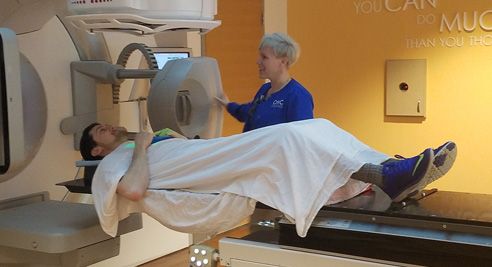Brachy applicator is ultimate tool for cervical cancers
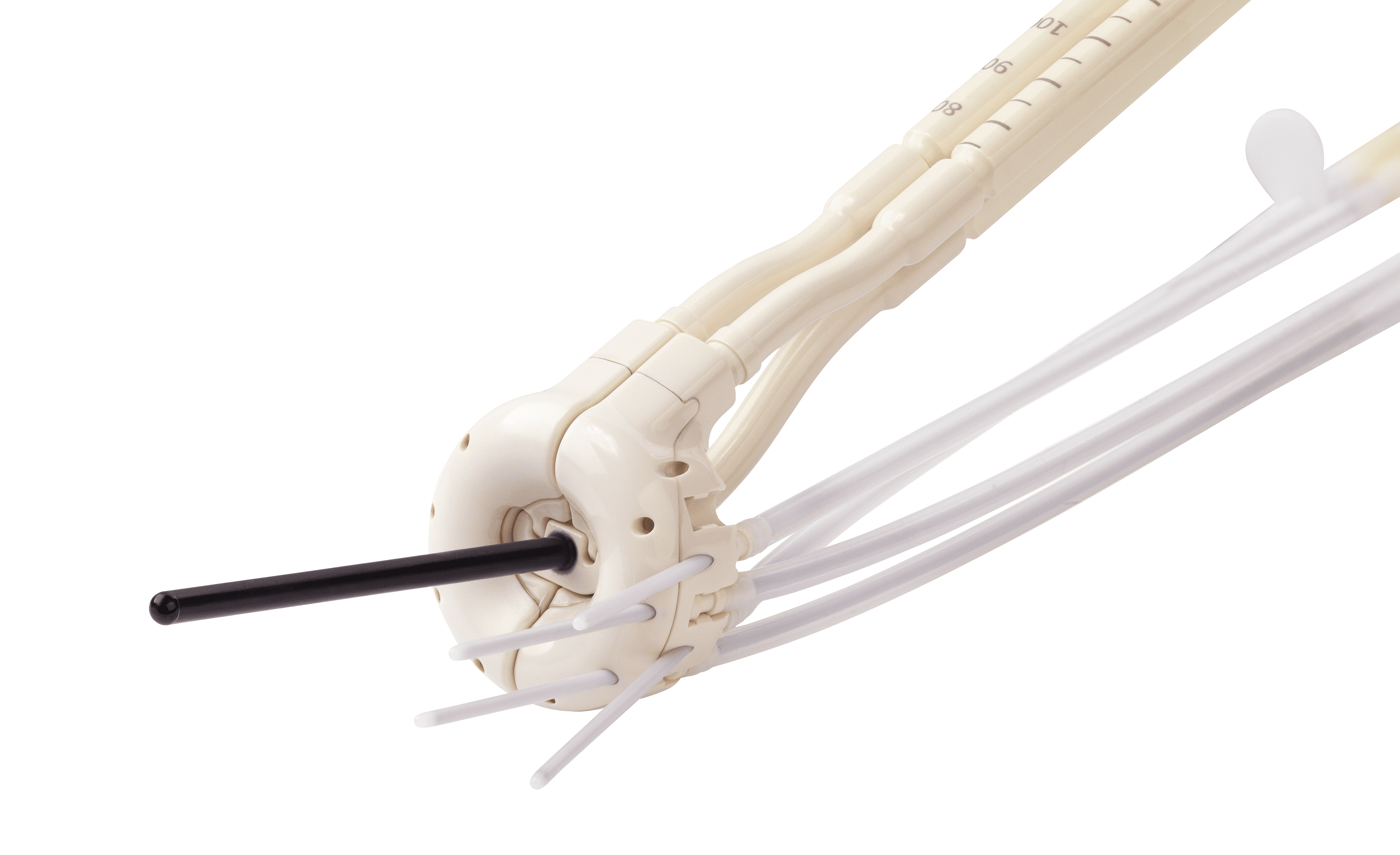
Florida Hospital Cancer Institute harnesses Elekta’s innovative Venezia brachytherapy applicator to treat GYN malignancies wherever they hide

International data demonstrates the superior efficacy of intracavitary/interstitial brachytherapy. The Venezia applicator is applicable for stages IB, IIA/B, IIIA/B, and IVA and designed to reach the parametrium and vaginal extensions.
Potent, highly targeted intracavitary/interstitial 3D image-guided adaptive brachytherapy (IGABT) is gaining increasing acceptance clinically and among national and international societies as the quintessential modality to treat all stages of cervical cancer. This is especially true when dealing with locally advanced disease that has until recently challenged the ability of clinicians to physically extend the therapeutic BT dose to reach the disease while also sparing healthy nearby tissues.
The choice of applicator is the critical factor in determining the success of IGABT, according to Matthew Biagioli, MD, MS, Chairman Department of Radiation Oncology, Florida Hospital Cancer Institute, which has used Elekta’s Venezia™ Advanced Gynecological Applicator since July 2017.
“For instance, for a patient with significant IIIB disease – in which you have complete involvement of the cervix extending into the lower uterine segment – using one of the market’s current hybrid applicators there is no way we can cover all of the disease,” Dr. Biagioli says. “Venezia is a new hybrid applicator designed not only to treat bulky IB and II tumors, but also IIIA and IIIB stage disease in a similar way that we had historically done with the standard Syed implant. You can even treat patients with IVA disease where there is bladder and/or rectum involvement.”
“Venezia is a new hybrid applicator designed not only to treat bulky IB and II tumors, but also IIIA and IIIB stage disease in a similar way that we had historically done with the standard Syed implant.”
Cervical cancer an enduring global problem
The emergence of robust, purpose-built solutions like Venezia comes at an opportune time as cervical cancer still represents a major worldwide health challenge with over a million new cases each year,[1] says Dr. Biagioli, who has extensively studied the subject. The incidence has decreased in the USA and western Europe through the 1980s and 1990s with the introduction of screening and vaccines, but the reductions have not met expectations.[2]
“This year an estimated 13,240 women will be newly diagnosed with cervical cancer in the US,” he says.
As a treatment option for cervical cancer, BT comes into the picture starting at the IB1 and IIA1 stages; patients receive a hysterectomy, pelvic lymph dissection or definitive radiation with EBRT and BT boost.
“For patients with IB2 and more advanced stages the standard of care is primarily definitive chemoradiation – 45-50 Gy to the pelvis – then a BT boost, which should deliver a 2 Gy equivalent dose at the tumor of approximately 85 Gy,” Dr. Biagioli says.
This comprehensive approach is reflected in the international guidelines[3-8], and BT, per se, enables radiation dose escalation to the tumor while minimizing the dose to OARs[9]. In addition, there have been several pattern-of-care studies that have demonstrated that if BT is omitted the result is worse local tumor control and worse survival.[10-12]
“The SEER database study[9] and the National Cancer Database study[13] of thousands of patients each also demonstrate that BT significantly improves survival compared to EBRT alone,” he adds. “The crux of the issue is that if a center isn’t doing BT now or is uncomfortable with it – then the onus is on these sites to educate themselves and get accustomed to BT, especially image-guided adaptive BT [IGBT] with 3D-based planning, ideally employing MRI. At the least, centers should develop an association with a higher volume BT center to which they can refer their patients with advanced cervical cancer. We cannot compromise on care for these individuals.
“If a clinic is omitting brachytherapy and just trying to get by with either an IMRT plan or EBRT with an SBRT boost, their patients with locally advanced cervical cancer probably are not going to do well.”
“If a clinic is omitting brachytherapy and just trying to get by with either an IMRT plan or EBRT with an SBRT boost,” he continues, their patients with locally advanced cervical cancer probably are not going to do well. It also cannot be overstated that 3D image-guided BT is superior to a 2D approach and that for large tumors – particularly those larger than 5 cm, a hybrid intracavitary/interstitial strategy is better than intracavitary alone.”
Venezia applicator puts advanced cancers within reach of IGABT dose
According to Dr. Biagioli, Venezia, which belongs to a new class of hybrid (i.e., intracavitary/interstitial) GYN applicators, simplifies the treatment of locally advanced cervical cancer by reducing the need for either perineal template or free-hand placement of interstitial needles.
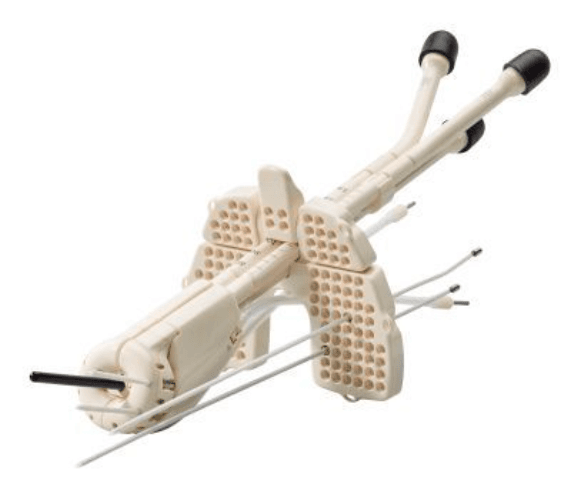

Diagram A: The Venezia applicator with vaginal caps and perineal template (left) and without these components (right)
“You have a lot better control regarding where the needles are going because they follow a much more predictable path than perineal or free-hand advancement of needles,” he explains. “And Venezia has what I call ‘click-in technology.’ The pair of half-moon shaped ovoids form a complete ring when clicked together. This provides a tactile indication – a click – that the applicator is correctly assembled since you can’t always visualize it once the ovoids are inserted.”
Dr. Biagioli provides an example in which a standard ring applicator (i.e., single unit, not two semi-lunar ovoids as in Venezia) can present problems.
“Because Venezia divides the ring in two, it enables much easier placement not only when you’re inserting the applicator, but also when removing it from a conscious patient.”
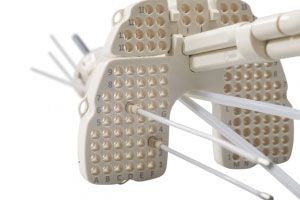
“Imagine the doctor wants to place a larger ring in a patient whose vaginal introitus is relatively small – a challenge that is exacerbated if the physician wants to use posterior interstitial needles and then place the ring,” he explains. “Just connecting the ring to the intrauterine tube creates a lot of volume and makes it very difficult to get through the introitus. Because Venezia divides the ring in two, it enables much easier placement not only when you’re inserting the applicator, but also when removing it from a conscious patient.
“The other Venezia feature I like (see Diagram A) is the two sets of needle directions incorporated in the ring,” he continues. “One set of holes allows you to place the needles traditionally, parallel to the tandem, and the other set of holes enables you to advance the needles in an oblique direction – letting you extend the needles out to the pelvic sidewall to treat patients with IIIB disease.”
In stages IIA and IIIA disease in which cancer extends to the vagina, Venezia includes cylinder caps inferior to the ring that accommodate catheters for treating the vaginal wall. “The caps are very easy to use – they just snap onto the semi-lunar ovoids and it’s no different than just placing the ovoids alone.”
According to Dr. Biagioli, a very obvious difference between Venezia and other hybrid applicators is the expansive perineal template. (See Diagram B)
“It has 134 holes – a great many more than other devices – which means more options to implant needles transperineally,” he observes. “It gives us the flexibility to implant 6 to as many as 10 needles to cover the parametrium based on the insight we obtain from the dose distribution analysis. Increasing the number of implanted needles at the beginning of treatment planning helps us achieve the preferred dosimetry.”
Clinical cases demonstrate Venezia capabilities
The following two cases from Florida Hospital showcase the benefits of Venezia in the clinic.
Case 1: Bulky IB2 tumor
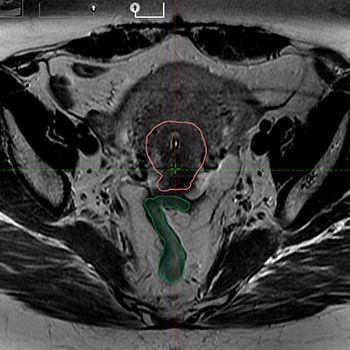
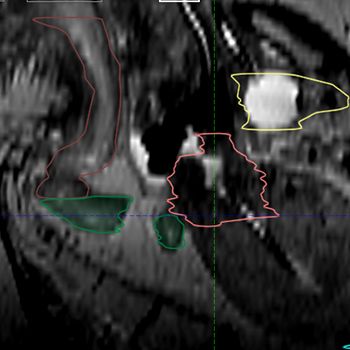
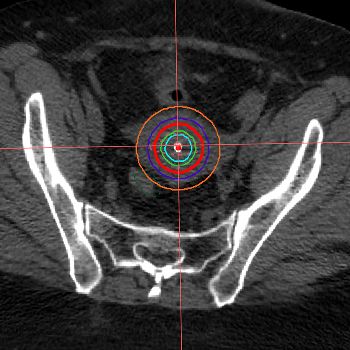
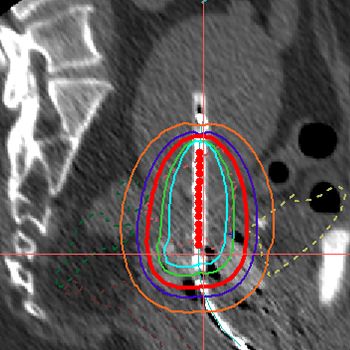
Dr. Biagioli: This is a relatively straightforward case that shows the MRI images in the axial and sagittal planes acquired at the time of brachytherapy and below is the dosimetry on CT. At the time, we were still doing a CT and an MRI at treatment time to boost our confidence in our physics team around the reconstruction. At top right the tandem has MR dummy sources in it and after the case, we stopped acquiring CT for reconstruction and reconstructing on MR alone using the MR compatible dummy sources, which has worked perfectly. This case demonstrates very simply that Venezia functions no differently than a ring-and-tandem applicator. For IA, IB and bulky IB2 cases the tandem and two semi-lunar ovoids perform extremely well.
Case 2: IIB vs IIIB
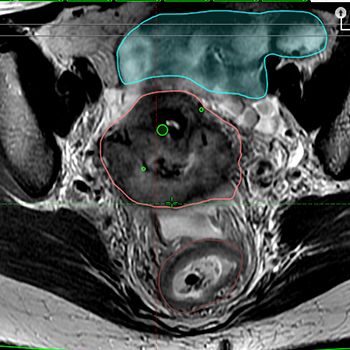
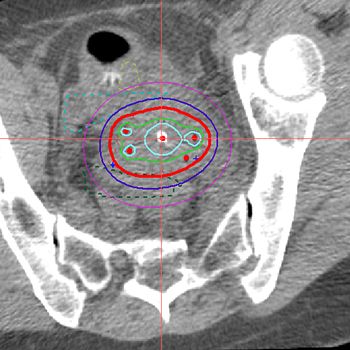
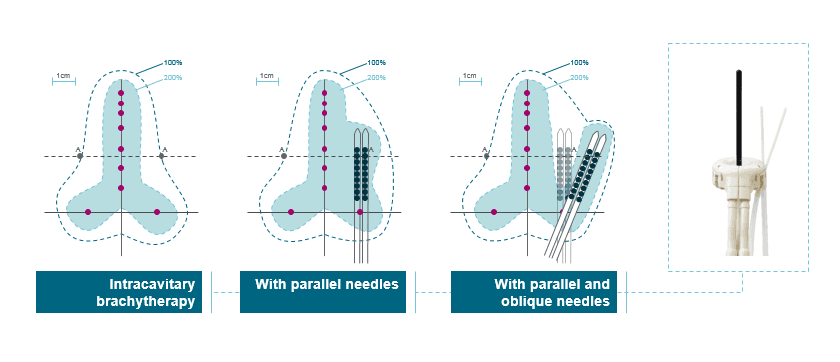
This patient had parametrial extension, possibly also borderline pelvic sidewall extension and had a good initial response with EBRT. On left is the MR at the time of brachytherapy and in green is the tandem and at least two of the four needles we used are visualized. The patient still had a significant bulky disease at the time of the first BT and on the right you can see what the dosimetry looks like. In the middle is the tandem and then you can see dose being distributed from each of the 4 needles out into the parametrium. The original approach by the group at University of Vienna was to limit the doses loading into the interstitial needles to approximately 10% of the total dose being delivered from the applicator. At Florida Hospital we have become more comfortable pushing more dose through the needles, in some cases beyond 10% as needed to ensure we obtain adequate coverage to the entire high-risk CTV. That said, we still typically start off with more of a point A distribution (graphic at right courtesy of Elekta) and then from there, start pushing dose into the needles laterally.

Dr. Biagioli: This image of a Venezia reconstruction demonstrates how the oblique needles can effectively push the dose out much more laterally than if only parallel needles were being used. That said, if there is only minimal parametrial extension, using just parallel needles works well.
The Venezia “bottom line”
The development and use of Venezia is a direct result of the clinical evidence pointing to the superior efficacy of image-guided 3D intracavitary/interstitial BT for cervical cancers, according to Dr. Biagioli.
“BT is recommended by national and international professional societies and the modality is in all of their guidelines. We know that it improves overall and cause-specific survival based on the SEER and NCDB analyses,” he explains. “We know the modality improves local control as demonstrated by the University of Vienna, as well as the other European data and the RetroEMBRACE trial. The evolution of BT to IGABT – using intracavitary/interstitial applicators such as Venezia – not only has led to improvements in local control, but also to the reduction of dose to OARs, the latter due to a significantly higher conformality versus using a intracavitary-only applicator. Reducing dose ultimately results in reduced toxicity compared to patients with a standard intracavitary approach.”
Download a recentwebinar Dr. Biagioli gave on IGABT and Venezia can be downloaded here.
Learn about upcoming brachytherapy workshops, including Venezia
References
- Globocan 2012
- NCI 2005
- Haie-Meder C, et al. Radiother Oncol. 2005;74:235-245;
- Viswanathan A, et al. Brachytherapy. 2012;11:47-52;
- Viswanathan A, et al. Brachytherapy. 2012;11:33-46;
- National Comprehensive Cancer Network. Cervical Cancer (Version 2.2015). http://www.nccn.org/professionals/physician_gls/pdf/cervical.pdf. Accessed July 7, 2015;
- http://www.figo.org/sites/default/files/FIGO-Global-Guidance-for-Cervical-Cancer-Prevention-and-Control.pdf. Accessed July 7, 2015;
- Haie-Meder C, et al. Ann Oncol. 2010;21:V37-40;
- Han K, et al. Int J Radiat Oncol Biol Phys. 2013;87:111-119;
- Lanciano R, et al. Int J Radiat Oncol Biol Phys. 1991;20:667-676;
- Isohashi F, et al. Brachytherapy. 2009;8:234-239;
- Banerjee R, et al. Int J Womens Health. 2014;6:555-564.
- Gill BS, et al. Int J Radiat Oncol Biol Phys. 2014;13:542-547.
Brachytherapy resources
Health care providers can obtain more information on the effective utilization of brachytherapy through the BrachyAcademy, supported by Elekta, which comprises a peer-to-peer medical education portfolio and includes programs, such as clinical workshops and training visits to leading medical centers and clinics worldwide. The BrachyAcademy also facilitates on-site expertise provided by independent medical consultants at your own hospital.
All programs are developed by leaders in the field of brachytherapy, thereby ensuring appropriate expertise and quality of medical and clinical content.
The BrachyAcademy also provides general information about brachytherapy as a treatment modality, and links to scientific publications and research in the field of brachytherapy.





